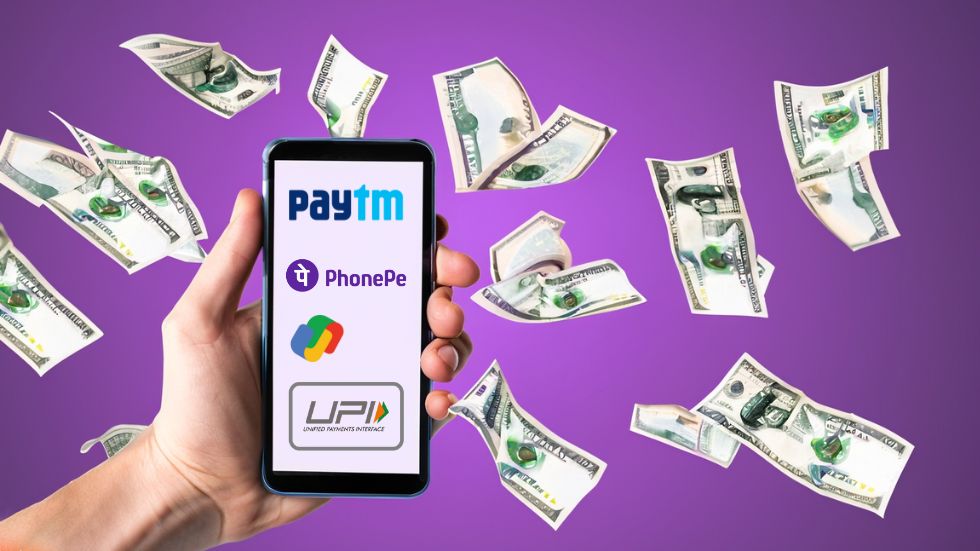What is UPI?
The National Payments Corporation of India (NPCI) created the Unified Payments Interface (UPI), a ground-breaking payment system. Launched in 2016, UPI has transformed the way people in India transfer money, make payments through UPI payment apps, and conduct digital transactions. UPI provides a seamless and instant transfer of funds between different bank accounts, enabling users to send and receive money through their mobile phones with ease.
Understanding How UPI payment apps make money?
UPI payment apps serve as intermediaries between users and their respective banks, facilitating secure and convenient transactions. While these apps offer their services for free to end-users, they generate revenue through various sources. Let’s explore these revenue streams in detail:
Merchant Payments:
UPI payment apps enable users to make payments to merchants, both online and offline, using their smartphones. These apps charge a nominal fee, usually a percentage of the transaction amount, as commissions, which vary between apps but are typically around 1% of the transaction value. The increased use of these by merchants has been driving this revenue stream’s rapid growth.
Value-Added Services:
UPI payment apps often offer additional services beyond basic fund transfers. These value-added services include bill payments, mobile recharges, ticket bookings, mutual fund investments, insurance premium payments, and more. Service providers offering these services often partner with UPI apps and pay a commission or transaction fee to access the user base of these apps.
Cashbacks and Incentives:
To encourage usage and promote user engagement, UPI payment apps provide cashback offers and incentives to users. These incentives are funded by sharing a portion of the commission earned from merchants or service providers. By offering cashbacks, discounts, or rewards, UPI apps attract new users and encourage them to make more transactions.
Advertising and Partnerships:
They are a relatively minor source of revenue for UPI payment apps. However, they provide an additional revenue stream that can help offset the costs of developing and maintaining the app. UPI payment apps typically show targeted ads to users based on their transaction history and other data. These apps collaborate with brands, merchants, and service providers to showcase targeted advertisements or promotional offers to their users.
UPI Platform Fees:
UPI payment apps pay a small platform fee to the NPCI for utilising the UPI infrastructure. This fee contributes to the revenue of the NPCI, which operates and maintains the UPI ecosystem. The platform fee may vary depending on the volume and value of transactions processed by the UPI app.
Transactional Costs and Revenue Implications:
While UPI payment apps generate revenue through the aforementioned sources, they also incur certain transactional costs that impact their profitability. These costs include:
Transaction Processing Charges:
UPI payment apps may need to pay a small fee for every transaction they process. The banks charge this fee in exchange for providing the UPI infrastructure and settlement services. The transaction processing charges can vary based on the transaction volume and the partnership agreements between the UPI app and the banks.
IT Infrastructure and Security:
Maintaining a robust IT infrastructure and ensuring the security of transactions are crucial for UPI payment apps. They invest significantly in technology upgrades, cybersecurity measures, and compliance frameworks to protect user data and prevent fraudulent activities. These investments in infrastructure and security contribute to the overall operational costs.
Customer Acquisition and Marketing:
To expand their user base and increase adoption, UPI payment apps engage in aggressive marketing campaigns and customer acquisition initiatives. These activities involve substantial marketing budgets and promotional expenses. While they contribute to revenue growth in the long term, they also impact short-term profitability.
Conclusion
UPI payment apps have a robust revenue-generation model. One of the biggest challenges facing UPI payment apps is competition. There are currently several apps available on the market like Gpay, PhonePe, India’s very own Bhim UPI and many more hence the competition is expected to intensify in the coming years due to the rising popularity of UPI . This could lead to a decline in transaction processing charges and commissions from merchants as app developers try to attract more users by offering lower fees.

